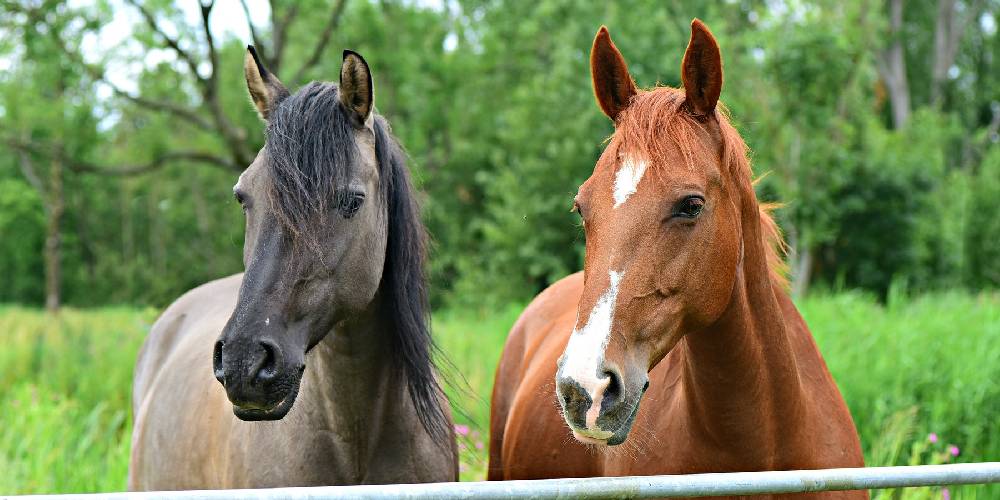All horses are warmbloods, right? Yes, all horses and mammals are warmblooded, but when looking at types of horses, the term warmblooded has a different meaning. What makes a horse a warmblood, what are some examples of warmblooded breeds, and how can you distinguish them from other horses?
What Is A Warmblooded Horse?
A warmblood is a horse that is almost a mix between cold blood and hot blood horses. These horses are typically bigger, taller, and stronger than their hot blood cousins like the Arabian, but are smaller and weaker still than their relative the cold blood. Warmblooded horses can stand at nearly any height and are used in all disciplines of riding and competition. These horses are light enough to jump and gallop quickly but are heavier still than hot bloods. Nearly 80% of horse breeds are warmblooded.
Do Warmbloods Actually Have Warm Blood?
Yes, horses like other mammals are warmblooded animals. When looking at types of horses, warm blood means something different than the temperature of their blood. Warm blood, when looking at horse types, means that a horse is active, but not hot tempered like a hot blood. Warm bloods are even tempered animals and can compete in a variety of disciplines.
Best Known Warm Blood Breeds
Quarter Horse
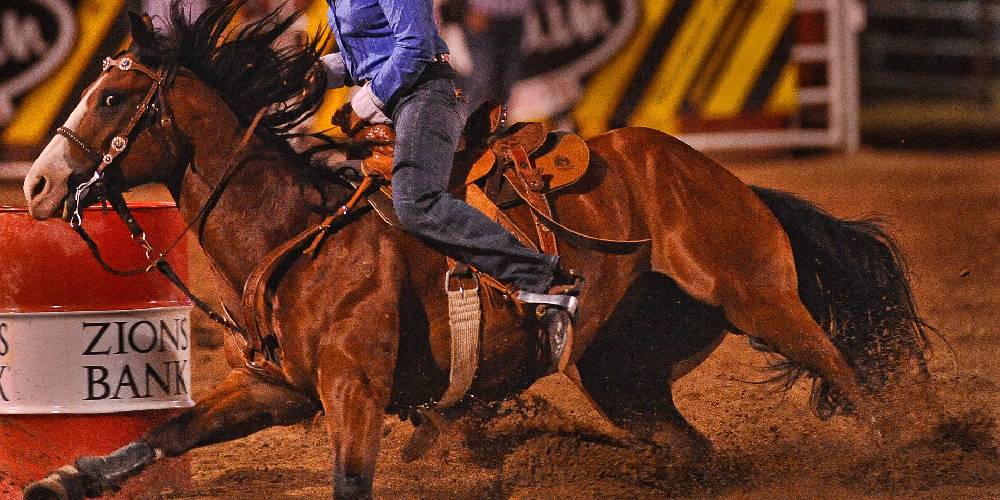
This breed of warmblood is one of the most popular breeds of horses in America. These horses can be used in a variety of competitions for both English and Western riding. Quarter Horses can come in nearly any solid color including palomino and roan, and can be very easily recognized.
Believe it or not, Quarter Horses are actually the fastest horses on earth. Read my article on top speeds and fastest breeds to learn more about the world’s fastest horses.
I also talk more about the Quarter Horse and How it compares to its cousin the hotblooded Thoroughbred in an article that compares the two breeds. Check it out!
Appaloosa
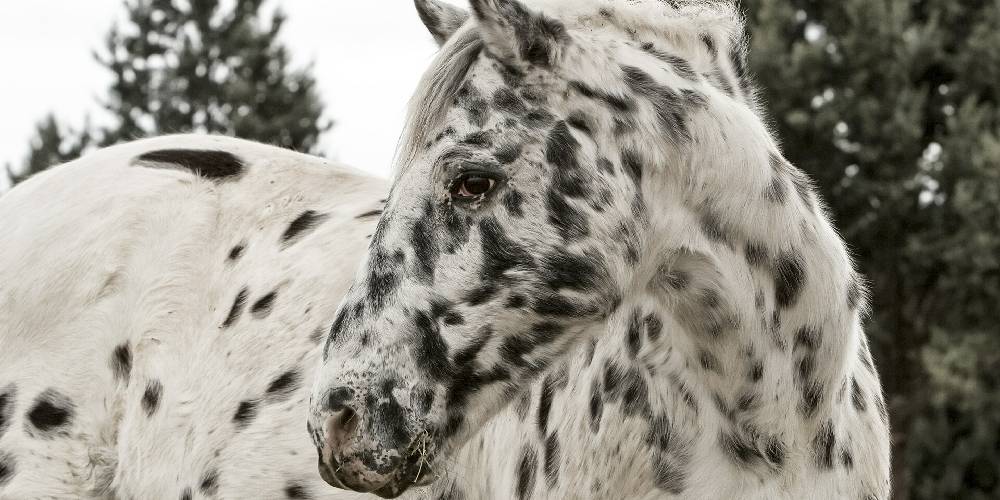
The Appaloosa is a horse that is very striking in appearance. These horses were prized by the Nez Perce Native Americans for their remarkable coat patterns, stamina, and hardiness.
Appaloosas can be identified by their coat colors which can come in many different shades and patterns from the blanket to the leopard spot patterns.
This warm blood is seen in a variety of disciplines in both English and Western riding styles and makes a flashy show horse when in the ring.
Oldenburg
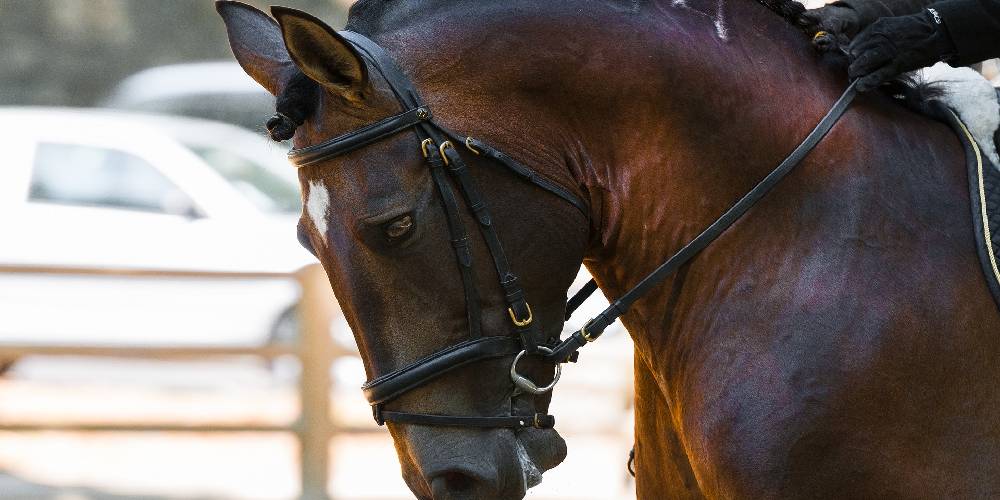
Many of these warm bloods are seen in English show rings and competitions because of their great success in dressage and show jumping. Oldenburg’s are great horses to use when competing because of their incredible drive, stamina, and temperament. When it comes to Western riding, these horses don’t have a very desirable western conformation. Their long lanky build is more desirable in English competitions.
This breed originated in Germany and was used as a Calvary horse and carriage horse. This breed was once a heavier breed until later crossing with the Thoroughbred and Barb horses to give it the narrow and fine build it has today.
Mustang
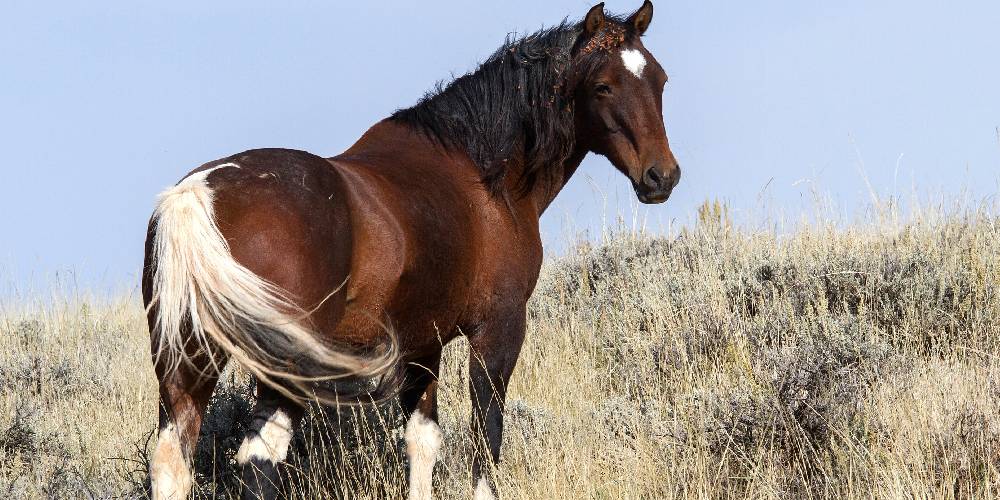
The Mustang is a name given to the wild horses that roam across the United States and parts of northern and southern North America.
Mustangs are a mix of many breeds, but a lot of them are descended from the Spanish horses brought over with the Conquistadors.
Mustangs can be any coat color or pattern and range in size from tall and lanky to short and stocky.
Most of the time, these horses that are caught and domesticated are turned into western riding horses. This is mainly because they usually are smaller and stockier horses that aren’t known for their jumping abilities.
Mustangs have great stamina and are very hardy animals and these traits are given to them from their years roaming free.
Hanoverian
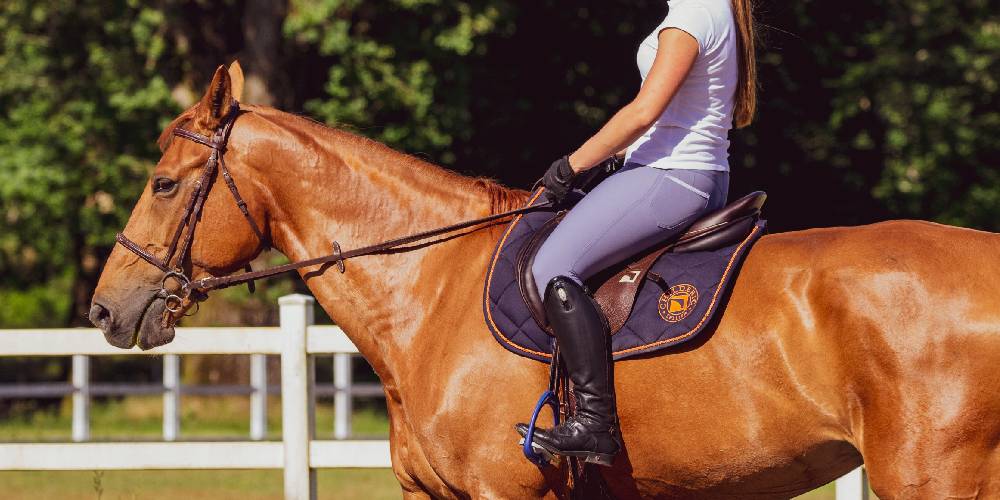
The Hanoverian is another breed, like the Oldenburg, that originated in Germany and is used mainly for jumping, dressage, and other English riding sports.
This breed was first intended to be used for carriage and farm work but after introducing the Thoroughbred into the blood lines, it became a lighter horse better used for riding.
Today this breed is desired for its talent as a higher competition horse. Dressage, showjumping, and cross country riding are this breed’s specialty.
How To Identify A Warmblood
A warm blood is identifiable by its discipline, appearance, gait, temperament, and size.
Their Discipline

Warm bloods are used in all disciplines known to man for both English and Western riding. They include:
- Barrel Racing
- Roping
- Pole Bending
- Goat Tying
- Bronc Riding
- Mounted Shooting
- Reining
- Western Pleasure
- Trail Riding
- Cutting
- Halter
- Showjumping
- Eventing
- Dressage
- Endurance
- Cross Country
- Flat Saddle/Country English Pleasure
- Hunter English Pleasure
- Hunter Jumper
- Side Saddle
- Carriage Pulling
- Racing
- Sulky Racing
- Sport Horse (In-Hand and Under Saddle)
- Polo
In other words, these horses are literally used for every discipline under the sun. It is hard to think of something that these horses aren’t used for.
When trying to identify a warmblood, look at them and if they aren’t thick and gigantic or petite and crazy then they are most likely a warmblood. as they fall right in between these two categories.
Their Appearance
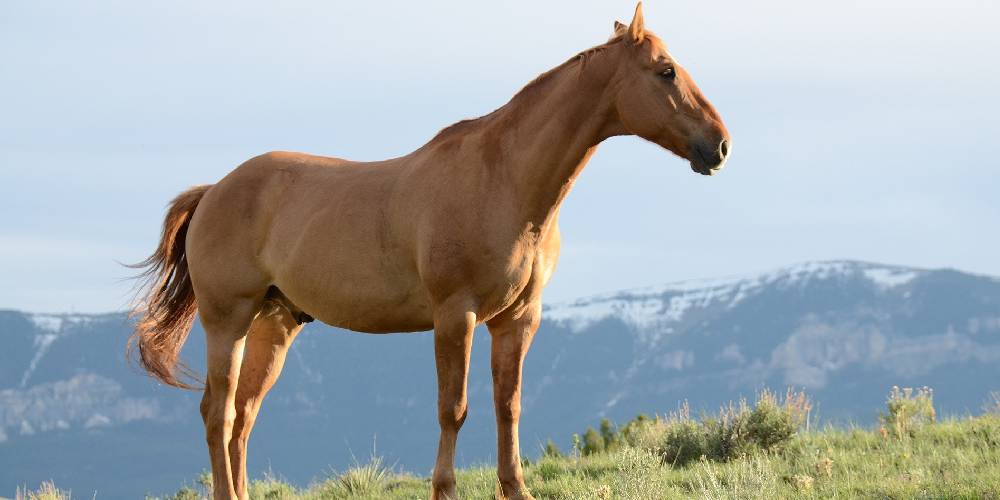
The warmblooded horse is usually balanced in conformation and can be any size. They appear usually to be proportionate and have less energy than their hotblooded cousins but have more energy, stamina, and agility than their coldblooded relatives.
Their Gait
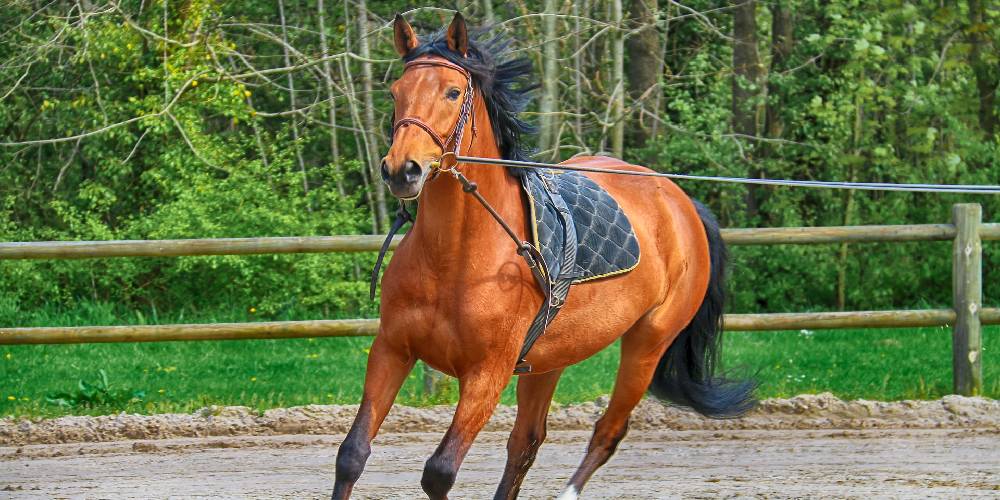
Some warmbloods, like the Saddlebred, Tennessee Walking Horse, Missouri Fox Trotter, Peruvian Paso, and Paso Fino, are gaited horses. This means not only do they do the typical gaits of walk, trot, canter, and gallop, they also can do the rack, foxtrot, and other gaits that are unnatural to the average horse.
I had a Missouri Fox Trotter as my first horse so I was able to feel the foxtrot gait. It is so smooth! You are going at a brisk pace but you can’t even feel the horse’s feet touch the ground. These horses are so smooth to ride.
All gaited horses are warmblooded so this is a great way to identify them. Otherwise, if a horse isn’t gaited, they have an average walk trot canter and gallop. Some of the larger warm bloods will have a rolling gait that is very powerful and extended, while the smaller ones like the Quarter Horse have a less extended gait.
Their Temperament
Warmblooded horses are even-tempered and are relatively easy to get along with. These horses make great riding horses for anyone at any age. Sometimes these horses can be a little unruly, but that is something to expect from any horse. These breeds are much more calmed down, lower maintenance, and easier to manage as compared to the hotblooded breeds, but they also have more energy and agility than coldblooded breeds.
Their Size
Warm bloods are less fine boned than the hotblooded breeds. These horses are typically a bit bulkier and heavier as well. Many of the warm bloods are taller and more powerful than hot bloods as well.
The larger breeds can reach up to around 17 hands high with the smaller breeds standing around 15 hands high.
As I mentioned before, horses that look between a hot blood breed like an Arabian and a draft horse breed like a Percheron are most likely warm blood. There are many more warmblooded horses in this world than coldblooded or hotblooded.
FAQs On Warmblooded Horses
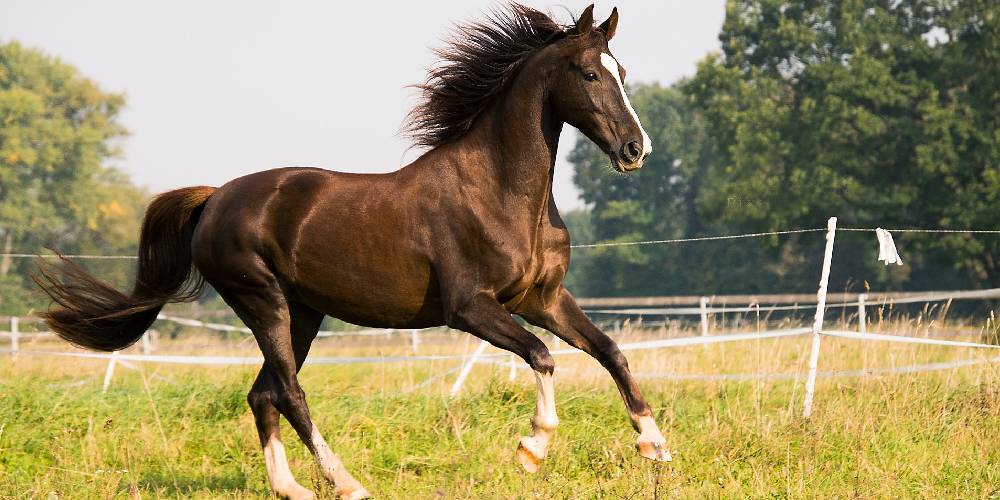
Are warmblooded horses more expensive than other breeds?
Yes and no. Horses like the Hanoverian, Oldenburg, and other breeds with excellent bloodlines and ability are going to be priced at top dollar. This goes for gaited horses as well as they are a rare find.
Horses like the Quarter Horse, where they are extremely popular and can be found anywhere are going to be a lot less expensive if they are a pet or a backyard horse as they aren’t being shown and most likely aren’t registered.
This is a yes and no answer because it really truly depends on the horse’s bloodlines, conformation, ability, and even their age.
Are Friesian horses considered warmblooded?
Friesian horses are gorgeous black horses that are classified as a draft breed. Some horse encyclopedias consider this breed to be a coldblooded horse because it is in fact a draft horse. However, this classification is constantly being debated because this breed is smaller than standard draft breeds, often considered a light horse, is known to be headstrong and sometimes Arab-like in behavior, and is usually used as a riding horse rather than a work horse.
I would personally classify this breed as a warmblooded draft, but the true classification of the breed is still up in the air.

